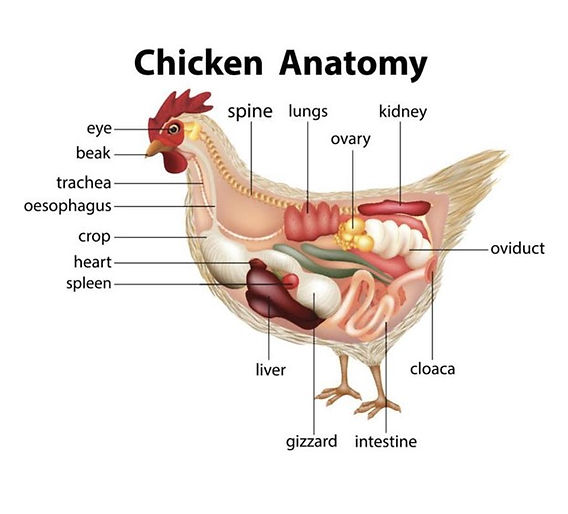
Have you ever wondered about the anatomy of a chicken? While they might seem simple at first glance, these feathered creatures possess some fascinating biological features. One of the most intriguing is their lack of a traditional “butt.” Instead of a separate anus like humans, chickens have a single opening called the cloaca that serves multiple purposes. This article will delve into the world of chicken anatomy, exploring the unique structure and functions of the cloaca.
This exploration will begin with an overview of chicken anatomy, followed by a detailed explanation of the cloaca and its role in both reproductive and excretory systems. We’ll also examine how this single opening contributes to the efficiency of poultry waste removal and reproduction.
Chicken Anatomy
Chickens, like all birds, are warm-blooded vertebrates with a well-developed skeletal system. Their bodies are covered in feathers, which provide insulation and aid in flight. They possess strong legs and feet adapted for walking, running, and scratching. Their digestive system is designed to process their primarily plant-based diet, featuring a crop for storing food, a gizzard for grinding, and a small intestine for nutrient absorption.
One of the most distinctive features of chicken anatomy is their respiratory system. Unlike mammals, birds have air sacs that connect to their lungs, allowing for a continuous flow of fresh air. This efficient respiratory system supports their high metabolic rate and active lifestyle. Furthermore, chickens have a highly developed nervous system with a complex brain capable of learning and adapting to their environment.
Cloaca Definition
The cloaca is a single opening found at the rear end of most birds, including chickens. It serves as a common passageway for the digestive, urinary, and reproductive systems. This means that waste products, eggs, and sperm all exit the body through this single opening.
Unlike mammals who have separate openings for these functions, the cloaca in chickens represents a more streamlined and efficient system. This unique anatomical feature allows for a simplified pathway for waste removal and reproduction.
Functions of the Cloaca
The cloaca plays a vital role in both the reproductive and excretory processes of chickens. During reproduction, the male chicken uses his cloaca to transfer sperm to the female during copulation. The female chicken’s cloaca is where eggs are laid, with the shell being formed within the oviduct before passing through the cloaca.
In terms of excretion, the cloaca serves as the exit point for both urine and feces. The kidneys filter waste products from the blood, which then travel to the cloaca via the ureters. Similarly, digested food passes through the intestines and is expelled through the cloaca as feces.
Reproductive and Excretory Systems
The cloaca’s role in both reproductive and excretory systems highlights its importance in a chicken’s overall health and survival.
Reproductive System
During mating, the male chicken mounts the female and aligns his cloaca with hers. This allows for the transfer of sperm from the male’s cloaca to the female’s oviduct, where fertilization occurs. The fertilized egg then travels through the oviduct, where it develops its shell before being laid through the female’s cloaca.
Excretory System
The excretory system in chickens is responsible for filtering waste products from the blood and eliminating them from the body. Waste products are transported to the kidneys, which filter them and produce urine. The urine then travels to the cloaca via the ureters. Feces, the solid waste product of digestion, also passes through the intestines and exits the body through the cloaca.
Efficiency in Poultry
The presence of a single opening for both reproductive and excretory functions offers several advantages for poultry. Firstly, it simplifies the anatomical structure, reducing the number of openings that need to be protected from external threats. Secondly, it allows for a more efficient use of energy as there is no need to maintain separate systems for each function.
Finally, the cloaca’s role in both reproduction and waste removal contributes to the overall efficiency of poultry farming. Farmers can easily monitor egg production and identify potential health issues through observation of the cloaca.
Conclusion
The cloaca is a fascinating anatomical feature that highlights the unique adaptations of chickens. This single opening serves as a common passageway for both reproductive and excretory systems, demonstrating the efficiency and streamlined design of poultry anatomy. Understanding the functions of the cloaca provides valuable insights into the biology and behavior of these important agricultural animals.
